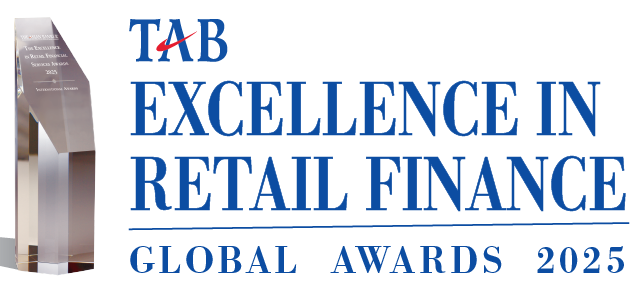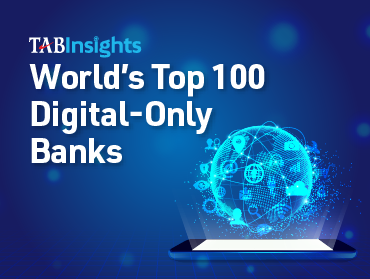OUR EVALUATION CRITERIA
Our awards are guided by core Belief Statements, which define the key elements we evaluate in our audit documents and interviews. Each statement is broken down into components with quantifiable performance indicators used to assess your institution's achievements.
Our scorecards are built around these statements, encapsulating the necessary dimensions to run the programme effectively. The questions we ask provide insights into your business, the strength against competitors, and the tactical and operational capabilities of your institution to compete effectively in your marketplace.
The evaluation process is transparent, with results published to outline how winners are selected, serving as a basis for our conclusions. These insights also benchmark industry players and identify gaps for future assessments.
BEST RETAIL BANK
We believe the best retail bank is one that demonstrates a profitable and long-term sustainable franchise, underpinned by strong business processes that drive consistent and profitable performance. It recognises financial institutions for their vision, execution, and market-leading propositions that positively impact their business and local consumers. This belief is translated into 10 components, each with quantifiable and qualitative data used as proxies to evaluate an institution's achievements. The Excellence Scorecard, the core of our evaluation process, assesses financial institutions at both country and regional levels for the Excellence in Retail Financial Services Programme. It was designed to provide a reliable, objective, and representative measure of performance across multiple areas, accepted by the retail financial services industry.
Evaluation Scorecard:
| Dimension | What we want to see | Weight | Indicator |
|---|---|---|---|
| Consistent Financial Performance | We want to see sustainable growth, profitability but not at the expense of good management of costs | 15% | |
| Corporate Strategy | We want to see the ability to articulate a strategy to which we are able to connect the quantifiable performance figures to a long term and achievable story | 10% | |
| Digital Journey | We will assess where your institution is in the digital journey | 15% | |
| Brand | We want to assess the brand promise that your institution enjoys in your marketplace. | 10% | |
| Sales Capability | We want to see how large, powerful and organised your sales capability is | 10% | |
| Customer Experience | We want to know if your customers love you more than your competitor through their experiences of basic services | 15% | |
| Risk Management | The ability to take on risks and price them in a managed manner. | 5% | |
| Process and Technology | We want to know that your technology infrastructure is keeping up with the times by your ability to respond to competition quickly | 10% | |
| People and Organisation | We want to know if you have a mixture of incumbent and new blood in the organisation and how resourceful you are deploying your personnel | 5% | |
| Achievement in Year under Review | State to us the achievements in your retail business in the year under review that have not been captured in the static data above | 5% | |
| To view the Best Retail Banks in Asia Pacific, Middle East and Africa click here | |||
BEST SME BANK
We believe the best SME Bank provides a comprehensive suite of solutions that address the core financial needs of medium and small enterprises, meeting the requirements of owners and employees while offering flexible financing options throughout the business lifecycle. This is supported by tailored value propositions for each industry vertical, digitalisation of banking processes, and a strong relationship banking approach in the larger enterprise segment to enhance customer engagement. Leading banks integrate products and services on a unified platform, helping clients grow their businesses, reduce operational costs, and expand into regional and overseas markets.
Evaluation Scorecard:
| Dimension | What we want to see | Weight | Indicator |
|---|---|---|---|
| Organisation | We want to know how strong SME banking is in your financial institution. | 20% | |
| Customer | We want to know if your customers value you more than your competitor through their experiences of basic services. | 20% | |
| Financial Performance | We want to see whether the ability to articulate a coherent strategy can be connected to quantifiable performance figures to a long term and achievable story. | 20% | |
| Risk | The ability to take on risks and price them in a managed manner. | 15% | |
| Technology and Operations | We want to know that your technology infrastructure is keeping up with the times. | 15% | |
| Achievement in Year under Review | State to us any achievements in the year under review that have not been captured in the above dimensions. | 10% | |
BEST WEALTH MANAGEMENT BANK
We believe wealth management is characterised by the total size and type of assets under management, the ability to leverage strong relationship management to sell both proprietary and third-party products, and the capacity to capture a significant share of the affluent customer segment with investible assets ranging from $100K to $700K, depending on the market. This is supported by a well-branded service and technological capability. This award focuses on business from the emerging affluent and affluent segment, excluding private banking.
Evaluation Scorecard:
| Dimension | What we want to see | Weight | Indicator |
|---|---|---|---|
| Business Strategy | We want to know whether a coherent wealth strategy can be formulated. | 20% | |
| Asset under Management | We want to see whether you are a strong wealth management player in your market. | 20% | |
| Financial Performance | We want to see sustainable growth, profitability but not at the expense of good management of costs. | 15% | |
| Customer | We want to know if your customers value you more than your competitor through their experiences of wealth management services. | 15% | |
| Advisory and Data Support | We want to know how much progress you made from a product to an advisory centric business model. | 20% | |
| Sales Management | We want to know your sales capabilities. | 10% | |
BEST DIGITAL BANK
We believe the best digital-only banks not only achieve scale through user growth but also offer a wide range of products and services, maintain a clear path to profitability, and balance loan and deposit growth. They successfully attract continuous venture capital funding from investors. This category focuses on first and second-generation digital-only banks that operate independently of traditional commercial banks, providing a unique virtual customer experience. It also includes digital banks with limited physical outlets or hubs, where physical locations are non-transactional and designed specifically for digital users. We also consider digital banking services of commercial banks if they operate as stand-alone entities or subsidiaries with separate branding, onboarding, and exclusive products that are not available to the parent bank's customers. This distinguishes them from mobile digital banking apps used by all customers of the parent banks.
Evaluation Scorecard:
| Dimension | What we want to see | Weight | Indicator |
|---|---|---|---|
| Customer | We want to see whether you can scale your customer base relative to the size of your market. | 30% | |
| Coverage | We want to know your market coverage and product scope. | 10% | |
| Financials | We want to see whether you are profitable and able to generate strong top line growth. | 30% | |
| Balance sheet | We want to see a strong investor commitment or registered capital base. | 10% | |
| For the World’s Best Digital Banks click here | |||
BEST FINANCIAL PLATFORM
We believe the best financial platforms, specifically payment platforms offering e-wallets, excel by providing a seamless, secure, and comprehensive digital payment experience that integrates effortlessly into users' daily lives. They demonstrate strong user growth, high transaction volumes, and the ability to scale across diverse markets while maintaining robust security measures and regulatory compliance. These platforms offer a broad range of services, including peer-to-peer payments, bill payments, merchant services, and value-added features like loyalty programmes and investment options. They effectively engage users through intuitive design, personalised experiences, and innovative features that drive customer retention and expand their ecosystem.
The best financial platforms also show a clear path to profitability, leveraging partnerships with financial institutions, merchants, and other service providers. They maintain a balanced growth strategy with diversified revenue streams, from transaction fees to lending services within the platform.
Evaluation Scorecard:
| Dimension | What we want to see | Weight | Indicator |
|---|---|---|---|
| Customer | We want to see whether you can scale your customer base. | 30% | |
| Scope | We want to know your market coverage and product scope. | 10% | |
| Usage | We want to see how much your users love you. | 30% | |
| Financial Performance | We want to see sustainable growth, profitability but not at the expense of good management of costs. | 20% | |
| Achievement in the Year under Review | State to us any achievements in the year under review that have not been captured in the above dimensions. | 10% | |
| For the World’s Best Financial Platforms click here | |||
Best DIGITAL ASSET EXCHANGE (RETAIL INVESTORS)
We believe the best digital asset exchanges for retail investors are defined by their ability to offer a secure, user-friendly, and compliant platform that facilitates seamless trading of digital assets. These exchanges excel in providing reliable on-ramp and off-ramp services, enabling users to easily convert between fiat currencies and digital assets. They demonstrate strong growth in user adoption, trading volumes, and have a clear framework to protect user assets, including cryptocurrencies and tokenised securities, and are equipped with advanced features such as real-time market data, analytics, and educational resources that empower retail investors.
Evaluation Scorecard:
| Dimension | What we want to see | Weight | Indicator |
|---|---|---|---|
| Customer Growth and Adoption | We want to see whether you can scale your customer base and increase user adoption. | 25% | |
| Trading Volume and Liquidity | We want to see high trading volumes and liquidity provision on your platform. | 20% | |
| Security and Compliance | We want to see robust security protocols and full regulatory compliance to ensure investor protection and trust. | 15% | |
| Product and Service Offerings | We want to know your market coverage and breadth of product offerings, including on-ramp and off-ramp functionality. | 15% | |
| User Experience and Innovation | We want to see how you enhance user experience through innovation and platform usability. | 10% | |
| Achievements in the Year Under Review | State to us any achievements in the year under review that have not been captured in the above dimensions. | 5% | |













